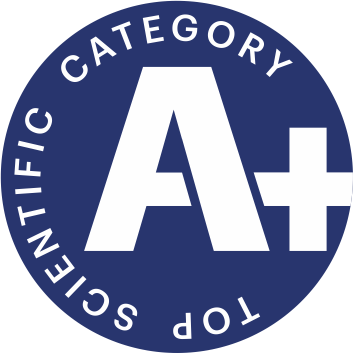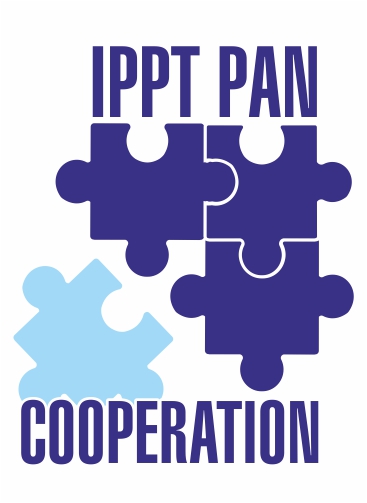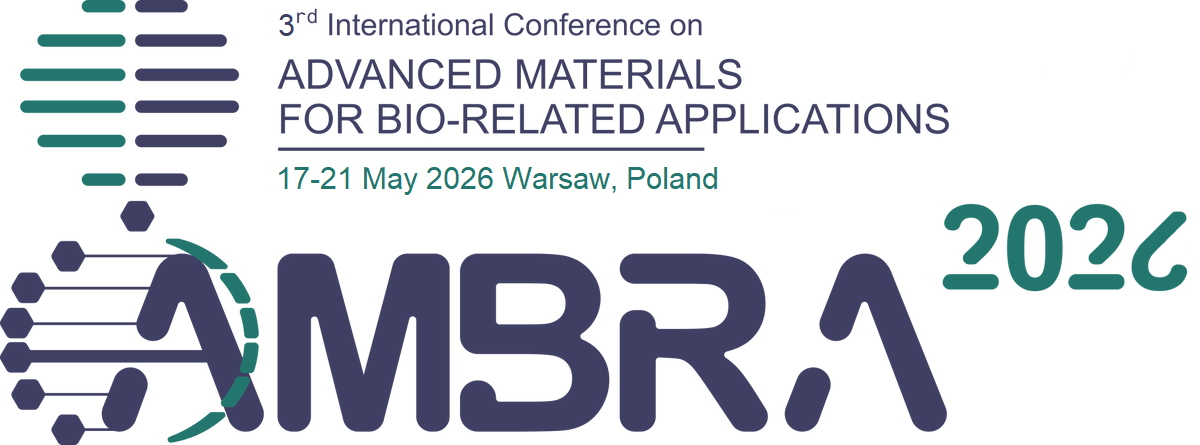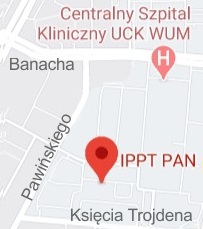| 1. |
Włoczewski M., Jasiewicz K., Jenczyk P., Gadalińska E.♦, Kulikowski K.♦, Zhang Y.♦, Li R.♦, Jarząbek D. M., AlCoCrFeNiTi0.2 High-Entropy Alloy Under Plasma Nitriding: Complex Microstructure Transformation, Mechanical and Tribological Enhancement,
METALLURGICAL AND MATERIALS TRANSACTIONS A-PHYSICAL METALLURGY AND MATERIALS SCIENCE, ISSN: 1073-5623, DOI: 10.1007/s11661-025-07752-1, pp.1-17, 2025 Abstract:
In this study, the AlCoCrFeNiTi0.2 high-entropy alloy (HEA) was plasma nitrided to investigate the microstructure and mechanical properties of high-entropy nitrides formed in the surface layer of the bulk sample. XRD measurements revealed a BCC → FCC crystal structure transformation, with the σ phase disappearing and hexagonal aluminum nitride emerging. Further experimental studies on the nitrided samples, including SEM, EDS, and EBSD, uncovered element segregation into multiple FCC phases with similar lattice constants, such as the NaCl-type (AlCrCoFeNiTi0.2)N high-entropy nitride. These observations align with theoretical analysis based on KKR-CPA calculations. Additionally, plasma nitriding induced high surface porosity; however, micropillar compression testing combined with nanoindentation revealed localized areas with significant hardness. A substantial reduction in the coefficient of friction was also observed. These findings not only provide deeper insights into the nitriding process of complex alloys, like dual-phase HEAs, but also hold promise for further exploration in the manufacturing of super-hard surfaces with high-entropy nitrides, enhancing mechanical properties for applications in harsh environments. Affiliations:
| Włoczewski M. | - | IPPT PAN | | Jasiewicz K. | - | IPPT PAN | | Jenczyk P. | - | IPPT PAN | | Gadalińska E. | - | Institute of Aviation (PL) | | Kulikowski K. | - | other affiliation | | Zhang Y. | - | University of Notre Dame (US) | | Li R. | - | other affiliation | | Jarząbek D. M. | - | IPPT PAN |
|  |
| 2. |
Wojtiuk E., Maździarz M., Stasiak T.♦, Brykała M.♦, Chmielewski M.♦, Włoczewski M., Kosińska A.♦, Zielińska K., Haponova O., Jacek B.♦, Mościcki T., Theoretical and experimental mechanical properties and thermal conductivity of W-Al-B thin films deposited by magnetron sputtering,
JOURNAL OF ALLOYS AND COMPOUNDS, ISSN: 0925-8388, DOI: 10.1016/j.jallcom.2025.185222, Vol.1049, No.185222, pp.1-14, 2025 Abstract:
This work compares experimentally measue properties of W-Al-B thin films with mechanical properties, density, and thermal conductivity values calculated using DFT methods. Theoretical modelling was conducted to simulate two WB2 stable structures alloyed with varying amounts of aluminium: α-WB2 (P6/mmm) and ω-WB2 (P63/mmc), as well as α-AlB2 (P6/mmm). Using the HiPIMS-DC magnetron sputtering technique, films with α-WB2 structure and varying aluminium contents were deposited at 400 °C. When layers are composed with x = 1.4% aluminium (where x = at%Al / (at%Al + at%W)), their microstructure changes from amorphous to crystalline columnar. A back transformation to an amorphous microstructure occurs when the amount of aluminium exceeds x = 7.3%. An original method was used for the film density studies, which combined mass measurements and microscopic observation. These measurements were then used to determine the layers' thermal conductivity using the thermoreflectance method. The measured conductivity of the deposited ceramic films range from 3 to 6 W/(mK). Moreover, the obtained films are very hard, e.g. H = 36.1 ± 1.7 GPa for x = 1.4% Al, but exhibit a much lower Young's modulus than the theoretical values. The relatively high H/E⁎ ratio > 0.1 for films with low aluminium content indicates anmore elastic character. Ab-initio calculations showed that, based on the criteria of Cauchy pressure (C12-C44) and Pugh's ratio (B/G), the α-WB2 structure may have a ductile nature in contrast to the other structures. However, the deposited films are rather brittle in nature, resulting from an excess of boron. The fracture toughness measurements show higher KIC values for low aluminium content. They are 3.8 MPa√m for WB2, 2.8 MPa√m for x = 1.4%, and 3 MPa√m for x = 7.3% aluminium Keywords:
thin films, high-power impulse magnetron sputtering, density, thermal conductivity, fracture toughness, stiffness tensor Affiliations:
| Wojtiuk E. | - | IPPT PAN | | Maździarz M. | - | IPPT PAN | | Stasiak T. | - | other affiliation | | Brykała M. | - | other affiliation | | Chmielewski M. | - | Institute of Electronic Materials Technology (PL) | | Włoczewski M. | - | IPPT PAN | | Kosińska A. | - | other affiliation | | Zielińska K. | - | IPPT PAN | | Haponova O. | - | IPPT PAN | | Jacek B. | - | other affiliation | | Mościcki T. | - | IPPT PAN |
|  |
| 3. |
Jarząbek D. M., Włoczewski M.♦, Milczarek M., Jenczyk P., Takesue N.♦, Golasiński K.♦, Pieczyska E. A., Deformation Mechanisms of (100) and (110) Single-Crystal BCC Gum Metal Studied by Nanoindentation and Micropillar Compression,
METALLURGICAL AND MATERIALS TRANSACTIONS A-PHYSICAL METALLURGY AND MATERIALS SCIENCE, ISSN: 1073-5623, DOI: 10.1007/s11661-024-07605-3, pp.1-11, 2024 Abstract:
In this paper, small-scale testing techniques—nanoindentation and micropillar compression—were used to investigate the deformation mechanisms, size effects, and strain rate sensitivity of (100) and (110) single-crystal Gum Metal at the micro/nanoscale. It was observed that the (100) orientation exhibits a significant size effect, resulting in hardness values ranging from 1 to 5 GPa. Conversely, for the (110) orientation, this effect was weaker. Furthermore, the yield strength obtained from the micropillar compression tests was approximately 740 MPa for the (100) orientation and 650 MPa for the (110) orientation. The observed deformations were consistent with the established features of the deformation behavior of body-centered cubic (bcc) alloys: significant strain rate sensitivity with no depth dependence, pile-up patterns comparable to those reported in the literature, and shear along the {112}<111> slip directions. However, the investigated material also exhibited Gum Metal-like high ductility, a relatively low modulus of elasticity, and high yield strength, which distinguishes it from classic bcc alloys. Affiliations:
| Jarząbek D. M. | - | IPPT PAN | | Włoczewski M. | - | other affiliation | | Milczarek M. | - | IPPT PAN | | Jenczyk P. | - | IPPT PAN | | Takesue N. | - | Fukuoka University (JP) | | Golasiński K. | - | other affiliation | | Pieczyska E. A. | - | IPPT PAN |
|  |
| 4. |
Mościcki T. P., Psiuk R., Jarząbek D. M., Ciemiorek-Bartkowska M.♦, Kulikowski K.♦, Jasiński J.♦, Włoczewski M.♦, Lewandowska-Szumieł M.♦, Effect of titanium and deposition parameters on microstructure and mechanical properties of W-Ti-B thin films deposited by High Power Impulse Magnetron Sputtering,
SURFACE AND COATINGS TECHNOLOGY, ISSN: 0257-8972, DOI: 10.1016/j.surfcoat.2024.130915, Vol.485, No.130915, pp.1-13, 2024 Abstract:
Tungsten diboride alloyed with transition metals provides an opportunity to obtain exceptional mechanical, physical, and chemical properties. We report a strategy for designing and synthesizing of superhard and low-compressible ceramic thin films with increased toughness and lowered residual stresses (σ < −0.9 GPa) deposited with high-power impulse magnetron sputtering (HiPIMS) from one target. The addition of 7–12 % titanium promotes additional strengthening mechanisms of the layers in one material, leading to the improvement of wear resistance compared to an alloyed WB2-z yet at even higher hardness 43.8 ± 2.1 GPa and nanoindentation toughness 4.9 ± 0.2 MPa√m. The compression of the micropillar shows that titanium addition changed the type of nanoindentation from cracking along the slip plane to bulging on the top of the pillar and next the crack initiation along column boundaries. The highest adhesion of the layers is obtained for addition of 7 % titanium and in all cases the wear has abrasive character. The controlled use of 200 μs pulses during synthesis with HiPIMS allows for an increase in the deposition rate and maintaining exceptional mechanical properties of the layers even at a substrate temperature of 300 °C. Keywords:
Ternary transition metal diboride thin films, Mechanical properties, HiPIMS magnetron sputtering, Wear resistance and adhesion Affiliations:
| Mościcki T. P. | - | IPPT PAN | | Psiuk R. | - | IPPT PAN | | Jarząbek D. M. | - | IPPT PAN | | Ciemiorek-Bartkowska M. | - | other affiliation | | Kulikowski K. | - | other affiliation | | Jasiński J. | - | other affiliation | | Włoczewski M. | - | other affiliation | | Lewandowska-Szumieł M. | - | other affiliation |
|  |
| 5. |
Krajewski M., Kaczmarek A., Tokarczyk M.♦, Lewińska S.♦, Włoczewski M.♦, Bochenek K., Jarząbek D., Mościcki T., Hoffman J., Ślawska-Waniewska A.♦, Laser-Assisted Growth of Fe3O4 Nanoparticle Films on Silicon Substrate in Open Air,
physica status solidi (a), ISSN: 1862-6319, DOI: 10.1002/pssa.202200786, No.2200786, pp.1-5, 2023 Abstract:
This work presents a growth of Fe3O4 nanoparticle films on silicon substrate. The iron oxide is deposited applying a pulsed laser deposition technique. The process is performed in open air in the absence and presence of external magnetic field. In fact, the morphologies of the obtained Fe3O4–Si samples are similar. The Fe3O4 nanoparticles are spherical with average diameters of 30 nm and are densely agglomerated on the Si substrate. The Fe3O4–Si material prepared in the absence of magnetic field has revealed more intense signals during X-ray diffraction and Raman measurements. The magnetic investigations indicate that the Fe3O4 nanoparticles are significantly coupled with the Si substrate and do not exhibit superparamagnetic behavior. Moreover, the Verwey transition is 98 K for both investigated Fe3O4–Si samples. Keywords:
Fe3O4 nanoparticles,magnetic materials,pulsed laser deposition Affiliations:
| Krajewski M. | - | IPPT PAN | | Kaczmarek A. | - | IPPT PAN | | Tokarczyk M. | - | University of Warsaw (PL) | | Lewińska S. | - | Institute of Physics, Polish Academy of Sciences (PL) | | Włoczewski M. | - | other affiliation | | Bochenek K. | - | IPPT PAN | | Jarząbek D. | - | IPPT PAN | | Mościcki T. | - | IPPT PAN | | Hoffman J. | - | IPPT PAN | | Ślawska-Waniewska A. | - | other affiliation |
|  |























